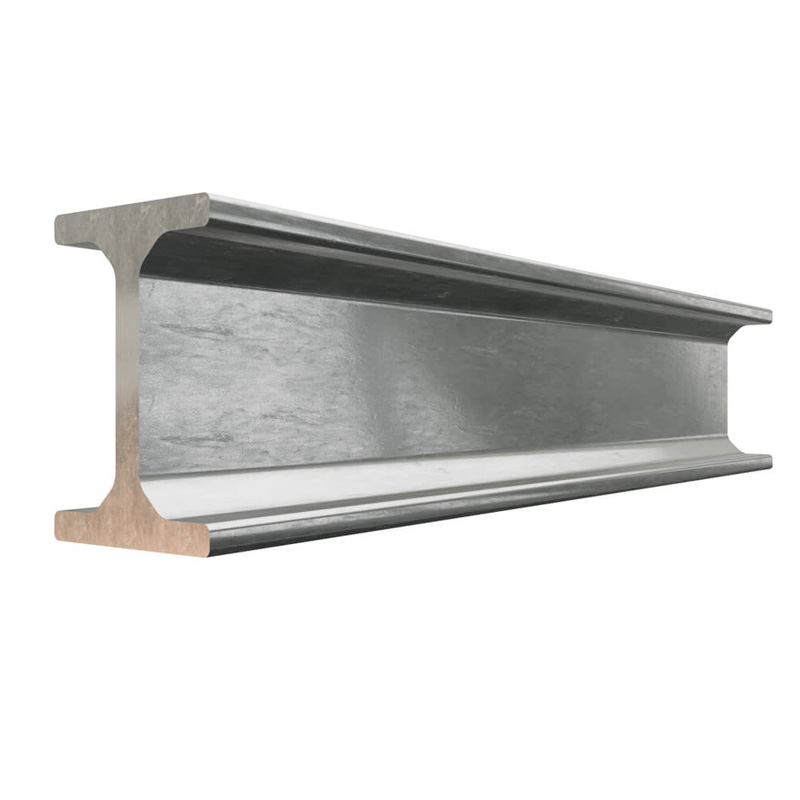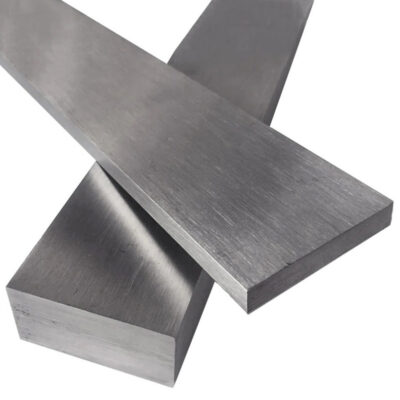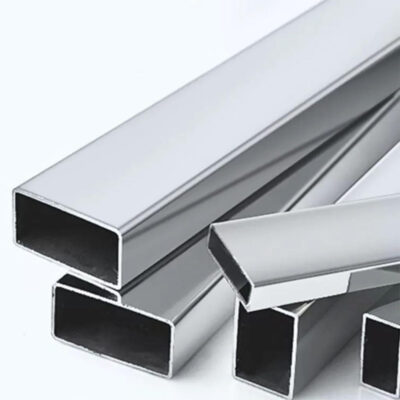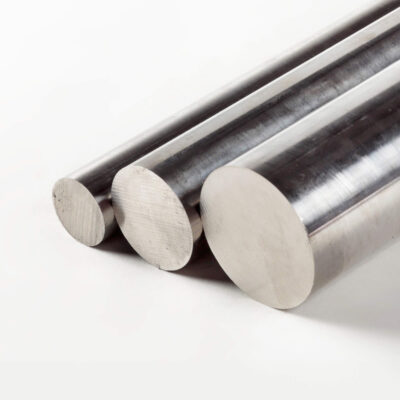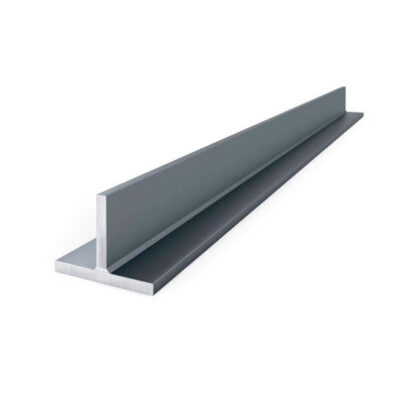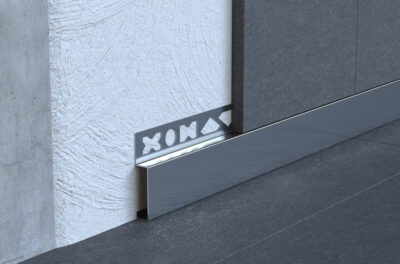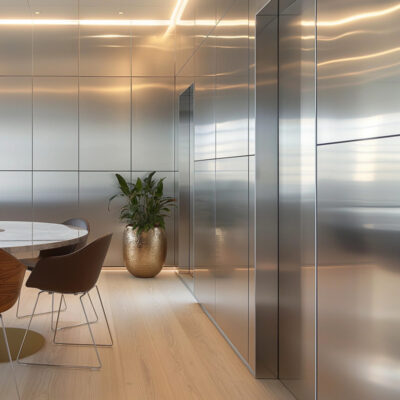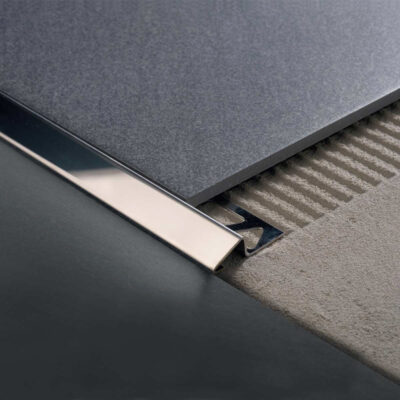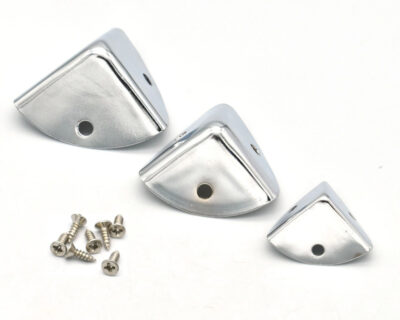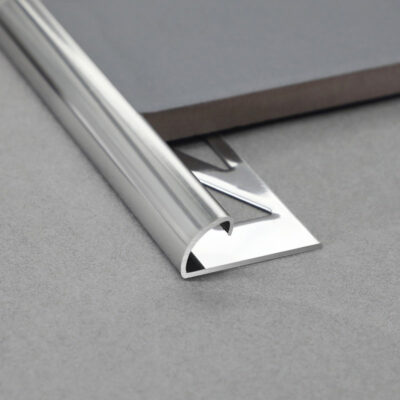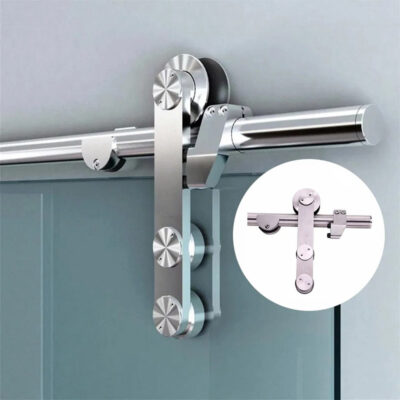Introduction to Stainless Steel I-Beams
The gleaming profile of a stainless steel I-beam against the backdrop of a modern building isn’t just visually striking—it represents one of the most significant advancements in structural engineering materials. During a recent inspection of a 30-year-old coastal structure, I was struck by how the stainless steel I-beams remained virtually pristine while nearby carbon steel elements had deteriorated significantly. This observation perfectly illustrates why these components have become indispensable in demanding environments.
Stainless steel I-beams are structural members whose cross-section resembles the letter “I”—consisting of two horizontal elements (flanges) connected by a vertical component (web). What distinguishes them from standard steel variants is their composition: an alloy containing a minimum of 10.5% chromium, which forms a self-healing protective oxide layer when exposed to oxygen.
The development of these specialized beams traces back to the early 20th century, following Harry Brearley’s discovery of stainless steel in 1913. However, their widespread structural application didn’t gain momentum until the 1960s when advances in manufacturing techniques made their production more economical. Even so, they remained primarily confined to specialized applications where exceptional corrosion resistance justified their higher cost.
The last two decades have witnessed a remarkable expansion in the use of stainless steel I-beams across various sectors. This growth stems from a deeper understanding of their total lifecycle costs rather than just initial investment. When factoring in minimal maintenance requirements and exceptional longevity, these beams often represent the more economical choice for projects with extended service life expectations or harsh environmental conditions.
Today’s stainless steel I-beams bear little resemblance to their early predecessors. Modern manufacturing processes have enhanced their mechanical properties, improved dimensional consistency, and expanded available sizes. Architectural trends favoring exposed structural elements have further boosted their popularity, as their inherent aesthetic quality eliminates the need for additional protective coatings or coverings.
Types and Grades of Stainless Steel I-Beams
The world of stainless steel I-beams is remarkably diverse, with numerous grades tailored to specific environmental conditions and performance requirements. During a consultation with a metallurgical engineer last month, she emphasized that selecting the appropriate grade is perhaps the single most crucial decision affecting long-term performance.
Stainless steel I-beams are primarily categorized into four metallurgical families: austenitic, ferritic, martensitic, and duplex. Each family exhibits distinct properties based on their crystalline structure and alloying elements.
Austenitic grades (300 series) represent the most commonly specified type for structural applications. Grade 304 (18% chromium, 8% nickel) serves as the workhorse for many projects, offering excellent corrosion resistance in most environments while maintaining good formability and weldability. Its slightly more robust cousin, 316, incorporates molybdenum to enhance resistance against chloride environments—making it indispensable for marine applications or structures exposed to de-icing salts.
The selection between these two dominant grades isn’t always straightforward. A structural engineer I collaborated with on a water treatment facility project ultimately specified 316 despite its 15% price premium over 304. His reasoning proved sound when considering the facility’s exposure to both chlorine compounds and fluctuating humidity levels.
Duplex stainless steels have gained significant traction in the last decade, particularly for load-bearing applications. These grades, including 2205 and 2507, combine properties of both austenitic and ferritic structures, delivering superior strength alongside excellent corrosion resistance. This unique combination allows for potential downsizing of sections, partially offsetting their higher unit cost.
| Grade | Chromium % | Nickel % | Molybdenum % | Key Properties | Typical Applications |
|---|---|---|---|---|---|
| 304/304L | 18-20 | 8-10.5 | – | Good general corrosion resistance, excellent formability | General construction, indoor structures, food processing equipment |
| 316/316L | 16-18 | 10-14 | 2-3 | Superior chloride resistance, good high-temperature strength | Marine environments, chemical processing, outdoor structures in coastal areas |
| 2205 | 22 | 5-6 | 3 | Higher strength than austenitic grades, excellent stress corrosion cracking resistance | Bridges, structural supports in aggressive environments, offshore platforms |
| 2507 | 25 | 7 | 4 | Exceptional corrosion resistance, highest strength among common stainless grades | Critical marine structures, chemical tanks, desalination plants |
Less commonly specified are the precipitation hardening grades like 17-4PH, which can be heat-treated to achieve remarkable strength levels. These specialized grades occasionally find their way into high-stress applications where both corrosion resistance and superior mechanical properties are non-negotiable.
The “L” designations (304L, 316L) indicate low carbon variants, which sacrifice some strength for significantly improved weldability by reducing susceptibility to carbide precipitation during welding. This trade-off often proves worthwhile for field-assembled structures where weld quality control presents challenges.
Beyond the grade designation, stainless steel I-beams also come in different finishes—ranging from mill finish to various polished surfaces. The selection affects not only aesthetic appearance but also corrosion performance, as smoother finishes provide fewer anchoring points for contaminants.
Manufacturing Process and Technical Specifications
The journey from raw material to finished stainless steel I-beam involves a sequence of specialized processes that significantly influence the final product’s performance characteristics. Having toured a major stainless steel production facility in Pennsylvania last year, I gained firsthand appreciation for the precision and expertise this transformation requires.
The manufacturing process typically begins with melting high-quality scrap stainless steel along with precise additions of alloying elements in an electric arc furnace. This molten material undergoes additional refining in an argon oxygen decarburization (AOD) converter, which removes excess carbon while maintaining valuable chromium content. The refined steel then proceeds to continuous casting, forming semi-finished products called billets or slabs.
These semi-finished forms undergo hot rolling, where they’re heated to approximately 1200°C and passed through a series of rollers that progressively shape the metal into the characteristic I-profile. The temperature control during this phase is absolutely critical—a metallurgist at the facility explained that even minor temperature variations could lead to inconsistent mechanical properties or dimensional irregularities.
What particularly impressed me about modern manufacturing was the integration of laser measurement systems that continuously monitor dimensional parameters throughout the rolling process. These real-time adjustments ensure tight tolerances—typically ±1.5mm for flange width and ±2.0mm for overall height in standard sections.
Stainless steel I-beams conform to several internationally recognized standards, with the most prevalent being:
- ASTM A276/A276M – Standard Specification for Stainless Steel Bars and Shapes
- EN 10088-4 – Stainless steels for construction purposes
- JIS G4303 – Stainless steel bars
Unlike their carbon steel counterparts, which follow standardized size designations (such as W, S, or HP series in American standards), stainless steel I-beams often require custom rolling due to their specialized applications and lower production volumes. This customization capability represents both a strength and a limitation of the material.
The dimensional parameters of stainless steel I-beams include:
| Parameter | Description | Typical Range | Tolerance |
|---|---|---|---|
| Height (h) | Overall vertical dimension | 100-600 mm | ±2.0 mm |
| Flange width (b) | Horizontal dimension of flanges | 50-300 mm | ±1.5 mm |
| Web thickness (tw) | Thickness of vertical element | 5-15 mm | ±0.8 mm |
| Flange thickness (tf) | Thickness of horizontal elements | 7-25 mm | ±1.0 mm |
| Length | Overall beam length | Up to 12m (standard) | ±5.0 mm |
| Weight | Mass per meter | 10-250 kg/m | ±2.5% |
After hot rolling, beams undergo controlled cooling to develop the desired microstructure. Austenitic grades typically receive a solution annealing treatment (heating to approximately 1050°C followed by rapid cooling) to dissolve carbides and optimize corrosion resistance. Some manufacturers apply additional skin passing or surface treatments to achieve specified finish requirements.
Quality assurance during production extends beyond dimensional verification to include mechanical testing (yield strength, tensile strength, and elongation), chemical composition analysis, and non-destructive testing methods such as ultrasonic inspection to detect internal discontinuities.
The final product must achieve a delicate balance between manufacturability, mechanical performance, and corrosion resistance—a balance that requires continuous refinement of production parameters based on feedback from field performance.
Structural Properties and Performance Characteristics
The distinctive value proposition of stainless steel I-beams emerges when examining their structural performance across diverse operating conditions. During a recent bridge rehabilitation project, I witnessed firsthand how these properties influenced material selection for critical support elements.
From a purely mechanical perspective, stainless steel I-beams exhibit strength characteristics comparable to—and in some cases superior to—their carbon steel equivalents. Austenitic grades like 304 and 316 typically offer yield strengths around 205-275 MPa, while duplex grades push this range to 450-550 MPa. This mechanical strength remains remarkably stable across temperature extremes where other materials might experience significant degradation.
What distinguishes stainless variants is their stress-strain behavior. Unlike carbon steel, which displays a well-defined yield point, stainless steels exhibit a more gradual transition from elastic to plastic deformation. This characteristic necessitates the use of the 0.2% offset method to determine yield strength. In practical applications, this translates to more predictable deformation under load—a critical factor in precision-dependent installations.
A structural engineer specializing in seismic design shared with me that this deformation behavior, coupled with excellent ductility (typically 40-60% elongation before failure in austenitic grades), makes these beams particularly valuable in earthquake-prone regions where energy absorption capacity can be lifesaving.
The modulus of elasticity for most stainless steel grades ranges from 193-200 GPa—slightly lower than carbon steel’s 210 GPa. This minor difference rarely impacts design calculations significantly but should be accounted for in deflection-sensitive applications.
Beyond mechanical properties, the corrosion resistance of stainless steel I-beams constitutes their defining characteristic. The self-healing chromium-rich oxide layer (often called the passive layer) provides protection against a spectrum of corrosive environments:
- Atmospheric exposure: Excellent resistance to standard urban, rural, and industrial atmospheres
- Marine environments: Grade 316 and above resist chloride-induced pitting and crevice corrosion
- Chemical processing: Various grades withstand specific chemical agents from mild acids to caustic solutions
- High temperature: Retained strength and oxidation resistance at elevated temperatures (up to 800°C for some grades)
During a coastal infrastructure assessment, I observed 24-year-old stainless steel I-beams that remained structurally sound and visually acceptable despite continuous exposure to salt spray—a condition that would have decimated conventional steel within 5-7 years without rigorous maintenance.
Fire resistance represents another critical performance parameter, particularly for structural applications. Stainless steels maintain structural integrity at higher temperatures compared to carbon steel, with austenitic grades retaining approximately 60% of their room temperature yield strength at 600°C versus about 30% for carbon steel. This superior fire performance sometimes allows for reduced fireproofing requirements, offsetting initial material costs.
The thermal expansion coefficient of austenitic stainless steels (approximately 16-18 × 10^-6/°C) exceeds that of carbon steel (12 × 10^-6/°C)—a factor that must be accommodated in design through appropriate expansion joints or flexible connections in structures spanning temperature extremes.
Fatigue performance, critical for cyclically loaded structures, typically surpasses carbon steel alternatives, particularly in corrosive environments where localized corrosion might otherwise initiate fatigue cracks. This property proves especially valuable in vibration-prone applications like pedestrian bridges or equipment supports.
Applications Across Industries
The versatility of stainless steel I-beams has led to their adoption across a remarkably diverse array of industries and applications. Their implementation often signals environments where standard materials face limitations or where lifecycle considerations justify premium material selection.
In architectural applications, I’ve observed increasing integration of exposed stainless steel I-beams as both structural and aesthetic elements. The E-Sang project in Singapore exemplifies this trend, utilizing polished 316 beams in a dramatic lobby installation that satisfies both structural requirements and design aspirations. Beyond visual appeal, these exposed elements eliminate the maintenance cycles associated with painted carbon steel systems—a particular advantage in publicly accessible spaces where disruption for maintenance carries significant costs.
Marine and coastal construction represents perhaps the most natural application environment for stainless steel I-beams. During a recent inspection of a harbor structure in North Carolina, the contrast between 12-year-old stainless supporting members and deteriorating conventional steel elements elsewhere in the structure provided compelling evidence for material selection consequences. Particularly in splash zones—where structures experience cyclical wetting and drying—the corrosion resistance of grades like 316L or duplex 2205 proves invaluable.
The food and beverage processing sector incorporates these beams in production facility frameworks, particularly in areas requiring frequent washdown or where bacterial contamination concerns exist. A dairy processing plant I consulted on selected 304 stainless I-beams for their cheese aging room supports specifically because the material:
- Withstands aggressive cleaning chemicals without degradation
- Doesn’t introduce contamination risk through surface corrosion
- Maintains a visually hygienic appearance throughout its service life
Chemical and pharmaceutical manufacturing facilities frequently specify stainless steel I-beams in process areas where corrosive agents might compromise standard materials. A chemical plant manager explained their selection of 316L beams for a new production line—despite the 40% cost premium—based on previous experiences with accelerated corrosion of painted carbon steel structures in similar environments. Their analysis projected complete recovery of the additional investment through eliminated maintenance costs within seven years.
Infrastructure applications have grown significantly, particularly in marine bridges, pedestrian overpasses, and transportation structures exposed to de-icing salts. The Stonecutters Bridge in Hong Kong and the Helix Bridge in Singapore showcase the material’s potential in signature infrastructure, though more modest applications in highway sound barriers and transit stations are becoming increasingly common.
| Industry | Typical Applications | Primary Benefits | Common Grades Used |
|---|---|---|---|
| Architecture | Exposed structural elements, lobby features, canopies, sunshades | Aesthetic appeal, maintenance-free surface, sustainability credentials | 304, 316 (coastal) |
| Marine/Coastal | Harbor structures, sea walls, offshore platforms, ship loading facilities | Superior corrosion in chloride environments, reduced life-cycle costs | 316L, 2205, 2507 |
| Food Processing | Production area frameworks, clean room supports, aging facility structures | Hygiene, compatibility with cleaning protocols, non-contaminating | 304, 316 |
| Chemical/Pharmaceutical | Process area structures, tank supports, walkways in corrosive environments | Chemical resistance, safety, reduced maintenance downtime | 316L, 904L, special alloys |
| Infrastructure | Bridges in marine environments, transit structures, water treatment facilities | Durability, minimal traffic disruption for maintenance, sustainability | 2205, 316L |
Wastewater and water treatment facilities increasingly incorporate stainless steel I-beams, particularly in areas exposed to chlorinated compounds or varying humidity levels. The upfront cost premium becomes easier to justify when considering the extended service life expectation for these critical infrastructure components.
Nuclear power facilities represent a specialized application where the material’s non-magnetic properties (in austenitic grades) and resistance to radiation damage make it particularly valuable. The controlled composition of nuclear-grade variants ensures predictable performance in these demanding environments.
One emerging application that caught my attention recently involves rapid-deployment temporary structures for disaster relief. The combination of high strength-to-weight ratio and corrosion resistance allows these components to be transported, assembled, disassembled, and reused across multiple deployments without degradation—a significant advantage over conventional materials in these scenarios.
Advantages and Limitations
Every engineering material represents a series of trade-offs, and stainless steel I-beams are no exception. Understanding both their advantages and limitations is essential for informed specification decisions. Having worked with these materials across multiple projects, I’ve developed a nuanced appreciation for where they excel and where alternatives might prove more appropriate.
The most compelling advantages include:
Exceptional corrosion resistance stands as the primary benefit, particularly in environments where moisture, chemical exposure, or atmospheric contaminants would compromise conventional steel. This property translates directly into reduced maintenance requirements—often eliminating the need for protective coating systems entirely. A government infrastructure project I consulted on calculated lifetime maintenance savings exceeding $4.2 million by specifying stainless beams for a coastal installation, despite an initial cost premium of $890,000.
Aesthetic versatility offers significant design freedom, with finishes ranging from industrial mill finish to mirror-like polished surfaces. This characteristic enables exposed structural elements that contribute to architectural expression rather than requiring concealment. An architect I collaborated with leveraged this property to eliminate suspended ceilings in a public space, simultaneously achieving aesthetic goals and increasing usable height.
Sustainability credentials have become increasingly important in material selection. Stainless steel I-beams typically contain 60-85% recycled content and remain 100% recyclable at end of life without property degradation. Their lengthy service life (often exceeding 100 years in appropriate applications) further enhances their environmental profile through amortization of embodied energy. Several recent projects earned additional green building certification points specifically through the use of these materials.
Fire performance exceeds conventional steel, potentially reducing fireproofing requirements in certain applications. This property proves particularly valuable in aesthetically sensitive installations where exposed structural elements must satisfy both design intent and safety considerations.
Hygienic properties make stainless steel I-beams ideal for clean environments from food processing to healthcare. The non-porous surface resists bacterial growth and withstands aggressive cleaning protocols without degradation—characteristics unmatched by most alternative structural materials.
However, several significant limitations warrant careful consideration:
Initial cost represents the most obvious constraint. Stainless steel I-beams typically command a 3-4× price premium versus conventional steel, though this multiplier varies with market conditions and specific grades. This differential often necessitates lifecycle cost analysis to justify selection. During a recent industrial project, we ultimately specified conventional steel with a high-performance coating system when the lifecycle analysis indicated a 27-year payback period for the stainless option—exceeding the facility’s expected operational timeline.
Availability limitations present practical challenges, with fewer standard sizes and longer lead times compared to carbon steel alternatives. A project manager I know faced a three-month procurement delay when specifying stainless I-beams for a time-sensitive project—a schedule impact that might have been avoided with earlier engagement of suppliers or consideration of alternatives.
Thermal expansion exceeds that of carbon steel by approximately 30%, requiring careful attention to expansion joints and connection details—particularly in applications spanning significant temperature differentials. An experienced structural engineer shared that overlooking this property during design led to unexpected distortion in a skybridge project, requiring costly remediation.
Fabrication complexity adds another layer of consideration. While highly weldable (especially L-grades), stainless steel requires specific procedures to maintain corrosion resistance at welded joints. The material’s higher work hardening rate also necessitates more frequent tool replacement during cutting and machining operations. These factors limit the pool of qualified fabricators and potentially impact project schedules.
Weight considerations occasionally impact selection. With density approximately 2% higher than carbon steel, stainless beams prove slightly heavier for equivalent sections—a minor difference for most applications but potentially significant in transportation or handling-constrained scenarios.
Stress corrosion cracking susceptibility in certain grades under specific conditions (high tensile stress, chloride exposure, elevated temperatures) requires appropriate grade selection and sometimes stress relieving treatments. This phenomenon rarely affects properly specified installations but has caused unexpected failures when overlooked.
Galvanic corrosion risk when in contact with dissimilar metals necessitates careful detailing of connections and interfaces. A building envelope failure I investigated stemmed precisely from overlooking this interaction between a stainless structural member and aluminum cladding elements.
Selection Criteria and Best Practices
Choosing the appropriate stainless steel I-beam for a specific application involves balancing technical requirements, budget constraints, and project-specific factors. Through numerous specification processes, I’ve developed a methodical approach to this selection that helps navigate the complexities involved.
Environmental assessment forms the foundation of the selection process. The first question should address exposure conditions: Will the beam be subjected to marine atmospheres, chemical environments, or standard atmospheric exposure? The chloride content of the environment proves particularly decisive in grade selection. For coastal applications within 5km of shorelines, I typically recommend nothing less than 316L grade, based on documented failures of 304 in these settings.
Service life expectations strongly influence material decisions. During a consultation with a public infrastructure client, I emphasized that their 75-year service life requirement effectively mandated stainless steel for exposed structural elements—despite higher initial costs—as maintenance cycles for conventional alternatives would exceed budget projections. Conversely, for temporary structures or installations with defined shorter lifespans, the economic argument for stainless becomes harder to justify.
Mechanical requirements must align with the selected grade’s properties. Duplex grades offer significantly higher strength than austenitic alternatives, potentially allowing section size reductions that partially offset their cost premium. During a recent industrial project, switching from austenitic 316L to duplex 2205 enabled a 20% reduction in section size while maintaining load capacity and corrosion performance—resulting in an overall cost savings despite the higher unit price.
Fabrication and installation considerations merit careful attention. Complex assemblies requiring extensive welding may benefit from low-carbon L-grades that resist sensitization during welding. A fabricator I regularly consult noted that proper welding procedure qualification and welder training for stainless steel represents their most critical quality control measure for these projects.
The selection process typically follows this sequence:
- Define environmental exposure and service life requirements
- Establish mechanical and performance criteria
- Identify candidate grades meeting these requirements
- Assess availability in required sections and dimensions
- Evaluate fabrication implications
- Compare lifecycle costs of viable alternatives
For applications with moderate corrosion concerns and standard loading conditions, 304/304L typically provides the most economical solution. Marine environments, chemical exposure, or elevated temperatures generally dictate 316/316L. High-stress applications or those requiring reduced section sizes benefit from duplex grades (2205, 2507), while specialized environments might require highly alloyed grades like 904L or 254SMO.
Regarding design considerations, several best practices have emerged from field experience:
When calculating structural capacity, use appropriate design values specific to the stainless grade rather than substituting carbon steel properties. The different stress-strain behavior, particularly the absence of a sharply defined yield point, necessitates this approach. Most international design codes now include specific provisions for stainless steel structural design.
Connection details require special attention. A structural engineer specializing in stainless steel applications emphasized that connection failures represent the most common issues in these systems. Fastener selection proves particularly critical—always specify compatible stainless fasteners, typically one grade higher than the structural members (e.g., 316 fasteners for 304 beams) to prevent fastener corrosion from compromising joint integrity.
Thermal movement accommodation becomes essential in installations spanning temperature extremes. Slotted connections or expansion joints at appropriate intervals prevent stress accumulation from differential thermal expansion. A rooftop installation I evaluated had developed significant distortion precisely because the designer had applied carbon steel expansion joint spacing to a stainless system.
Surface protection during construction prevents contamination that might compromise corrosion resistance. Iron particles embedded in stainless surfaces during fabrication or handling create sites for preferential corrosion. Proper protection protocols include dedicated stainless-only tools, non-metallic brushes for cleaning, and protective coverings during adjacent carbon steel work.
Lifecycle cost analysis often provides the most compelling justification for stainless steel I-beams. This analysis should include:
- Initial material and fabrication costs
- Installation requirements
- Anticipated maintenance intervals and costs
- Potential revenue impacts of maintenance downtime
- End-of-life considerations including salvage value
- Risk factors associated with potential premature failure
When properly conducted, this analysis frequently demonstrates that stainless steel I-beams represent the most economical solution for exposed structural applications with service lives exceeding 25-30 years—particularly in corrosive environments.
Future Trends and Innovations
The landscape for stainless steel I-beams continues to evolve through material innovations, manufacturing advances, and changing market demands. Several emerging trends appear poised to shape this sector in the coming years.
Lean duplex stainless steels represent one of the most promising developments I’ve encountered. These grades (such as LDX 2101 and 2304) contain reduced nickel content compared to standard duplex or austenitic grades while maintaining excellent corrosion resistance and mechanical properties. During a recent material selection process, I specified LDX 2101 beams that delivered comparable performance to 316L at approximately 15% lower cost—a differential directly attributable to reduced nickel content. As nickel typically accounts for 8-10% of austenitic stainless steel cost, these lean compositions offer meaningful economic advantages while maintaining essential performance characteristics.
Additive manufacturing technologies are beginning to influence stainless steel structural elements, though current applications remain limited to specialized components rather than full-scale I-beams. A demonstration project I visited last quarter showcased 3D-printed stainless steel nodes connecting conventional I-beam elements—enabling complex geometries that would be prohibitively expensive to produce through traditional methods. While mass production of entire beam sections through additive methods remains economically unfeasible, these hybrid approaches present intriguing possibilities for optimized structures.
Surface modification technologies continue advancing, with developments in electrochemical treatments that enhance both corrosion resistance and aesthetic qualities. A new electropolishing variant demonstrated at a recent industry conference achieved remarkable surface uniformity while reducing process time by approximately 40%—potentially addressing some of the cost concerns associated with premium finishes.
Computational optimization of section profiles shows considerable promise. Traditional I-beam shapes evolved primarily for efficient hot-rolling production rather than optimized structural performance. Advanced computational modeling coupled with more flexible manufacturing methods now enables customized profiles that maximize strength-to-weight ratios for specific loading scenarios. A structural engineer pioneering these approaches estimated material savings of 12-18% through these optimized sections, potentially offsetting some of the material cost premium.
Sustainability considerations increasingly influence material selection, with stainless steel’s recyclability and longevity aligning well with green building objectives. Recent environmental product declarations (EPDs) for stainless structural elements have quantified these benefits, facilitating their incorporation into lifecycle assessments and green building certification systems. The circular economy model particularly favors stainless steel, as its recycling process preserves all material properties indefinitely—unlike many competing materials that experience downcycling with each recycling cycle.
Market penetration continues expanding beyond traditional niches into mainstream construction applications. A market analysis I reviewed projected 7-9% annual growth in stainless structural applications through 2028, significantly outpacing overall construction market growth. This expansion reflects growing recognition of lifecycle cost advantages and increasing prioritization of maintenance minimization in infrastructure planning.
Regulatory developments may further accelerate adoption in certain sectors. Emerging standards for critical infrastructure resilience increasingly emphasize service life expectations that favor corrosion-resistant materials. Similarly, evolving requirements for healthcare and food processing facilities continue to elevate material selection criteria for hygienic performance—an area where stainless steel excels.
Integration with smart building technologies represents another frontier. A research project I recently reviewed demonstrated embedded sensors within stainless structural elements to monitor structural health and performance parameters. The material’s corrosion resistance proves particularly compatible with these long-term monitoring applications, as sensor reliability remains uncompromised by substrate degradation.
Cost stabilization efforts continue through material innovation and supply chain optimization. The price volatility that has historically challenged stainless steel specification—particularly during nickel market fluctuations—is being addressed through alternative alloy systems and more sophisticated procurement strategies. Several major producers have introduced price stabilization programs specifically for construction applications, reducing budget uncertainty for specifiers.
As with most evolving technologies, these developments bring both opportunities and challenges. The proliferation of new grades and treatments sometimes creates specification confusion, while the performance data for novel solutions inevitably lags behind their market introduction. Navigating these complexities requires ongoing education and careful evaluation of manufacturer claims against independent testing results.
Conclusion
Stainless steel I-beams occupy a specialized but increasingly important niche in modern construction and industrial applications. Their unique combination of corrosion resistance, mechanical properties, and aesthetic potential enables solutions to challenging design problems, particularly in environments hostile to conventional materials.
The decision to specify these premium structural elements rarely comes down to a single factor. Rather, it emerges from careful consideration of technical requirements, environmental conditions, service life expectations, and total ownership costs. When properly selected and detailed, stainless steel I-beams deliver exceptional long-term performance that justifies their initial cost premium in appropriate applications.
The continuing evolution of materials science, manufacturing techniques, and computational design tools promises to further enhance the value proposition of these specialized structural elements. As sustainability considerations gain prominence and lifecycle thinking becomes standard practice, the inherent advantages of stainless steel—particularly its durability, recyclability, and maintenance-free performance—align increasingly well with contemporary design priorities.
For designers and specifiers approaching material selection decisions, a methodical assessment process focusing on specific project requirements rather than general assumptions will yield the most appropriate solutions. In some cases, this process will clearly indicate stainless steel as the optimal choice; in others, alternative materials may better satisfy the unique combination of requirements and constraints.
The extraordinary durability of properly specified stainless steel I-beams makes them not merely components of current structures but investments in future infrastructure—potentially serving generations beyond their initial installation. This perspective transforms the economic calculation from simple initial cost comparison to a more nuanced evaluation of long-term value creation.
Frequently Asked Questions about Stainless Steel I-Beams
Q: What are the benefits of using Stainless Steel I-Beams?
A: Stainless Steel I-Beams offer several key benefits, including corrosion resistance, which makes them ideal for environments with exposure to moisture or chemicals. They are also durable and require minimal maintenance, which can lead to long-term cost savings. Additionally, their aesthetic appeal makes them suitable for visible structural applications.
Q: How are Stainless Steel I-Beams manufactured?
A: The manufacturing process for Stainless Steel I-Beams typically involves roll forming, where a strip of metal is passed through a series of rollers to achieve the desired shape. Larger beams may be manufactured using laser fusion technology, which provides added strength and versatility by allowing different thicknesses or material grades.
Q: What are the common grades of Stainless Steel I-Beams?
A: The most common grades for Stainless Steel I-Beams are 304/304L and 316/316L. These grades offer excellent corrosion resistance and mechanical properties suitable for structural applications. They are widely available and often selected based on their resistance to various environmental conditions.
Q: How do I choose the right size of Stainless Steel I-Beams for my project?
A: Choosing the right size of Stainless Steel I-Beams involves considering several factors:
- Span Length: The distance between supporting points.
- Load Requirements: Both live and dead loads that the beam will support.
- Material Properties: Tensile strength and yield strength of the stainless steel.
- Industry Standards: Ensuring compliance with relevant building codes and safety factors.
Q: Can Stainless Steel I-Beams be customized or cut to specific sizes?
A: Yes, Stainless Steel I-Beams can be cut to size according to specific requirements. Additionally, they can be supplied with a polished finish if desired. Customization options include varying thicknesses and even material grades, especially when utilizing laser fusion technology for larger beams.

